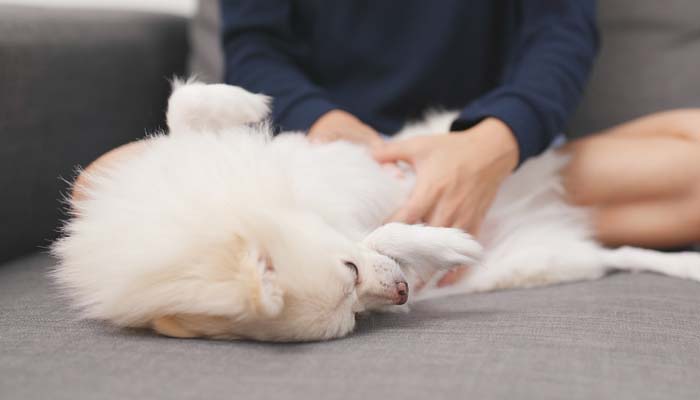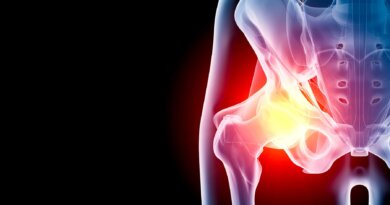How to Massage Gas Out of a Dog – Top Dog Tips
Humans are not the only ones that experience excessive gas; dogs suffer from flatulence as well and can ultimately have worse gas than humans.
Gas is normally harmless and is a common occurrence, other times it can be a sign of an underlying health issue.
Even with the possibility of there being health problems, sometimes it is just gas that the dog cannot pass, and your pooch may need some assistance from you in releasing it.
That is where you the owner will step in and participate in the universal practice of massaging gas out of the dog.
Here’s how to do it and what to know about this process.
Gas in Dogs
Dogs form gas because of bacterial fermentation of nutrients, just like humans.
This sometimes results in gases being released.
Gas can also be formed by dogs swallowing too much air, which happens more frequently than bacterial fermentation.
When it is caused by bacterial fermentation, it is usually a result of a change in diet that does not agree with their stomach.
This can be from the addition of “gas-positive” foods such as soybeans, beans, peas, spoiled foods, milk, spices, and many other high-fiber foods.
Most of these are difficult for the dog to digest, allowing the gas to spill over and out of the dog’s body.
As most gas does originate from a dog taking in too much air, it is important to understand and be able to identify situations that may be causing it.
The main cause is eating too quickly, which can be initiated by poor training or by the need to compete with another dog for food.
It can also be caused by feeding a dog too quickly after allowing them to run. This can be fixed with the use of slow dog feeders, because your pet needs to slow their breathing before attempting to eat and if the food is provided, they may attempt to eat before they are given the chance.
Some other potential causes of gas in dogs include poor nutrition, medical issues, anxiety, and stress.
How to Massage the Gas Out of a Dog
Unfortunately, some dogs are not able to release their gas on their own and suffer from gas build-ups in their systems.
Massaging parts of the dog will relieve said gas and alleviate discomfort, but it’s important that massaging does not replace advice of a vet.
There is a certain way that the dog should be handled and massaging freely may not benefit them the way owners might think.
It is essential that owners massage dogs gently and only apply pressure when necessary.
The massage is needed to relieve gas, so remember that the gas may be painful and putting unnecessary pressure on a sensitive area may unsettle the dog.
The best way to massage the dog is to flatten your palm and slowly move over the dog’s body.
Pay attention to areas that are hardened versus the areas that are soft and malleable.
Feel the layers, their hair, skin, fat, muscle, and bone. For large areas, rub to relieve the pressure. For small areas, it may be more efficient to squeeze.
To keep the dog calm and make sure they enjoy the massaging process, it may help to finish the massage by petting them.
Give them a good scratch behind the ears or a belly rub.
Ensure that they associate the massage with a good feeling rather than leaving them feeling uncomfortable and violated.
You can follow the tips in this video on how to move your hands for this massage:
Where and Why You Need to Massage Your Dog
Depending on what is causing the gas build-up, the place where an owner will massage their dog will change.
Gas may not just be stuck in their system, but it may be caused by the dog having anxiety, being tense, or suffering from the soreness that is preventing them from relaxing.
All places require the same method of massaging, only the placement is changed.
Soreness
When dogs experience large amounts of activity that their body is not used to or may not be suited for, especially for older dogs, they may begin to show signs of soreness.
Limping or constantly laying down are signs that they were overworked over the weekend or trip and may need some assistance in having relief.
As their bodies are suffering, they may be clenching their bodies in pain.
The best way to relieve it is give your dog a relaxing massage (see here) by squeezing the muscles to remove the tension off of the tendons.
No sudden or direct force is needed. Massaging over the next couple of days will reduce their soreness and keep it away.
Anxiety
A dog with anxiety does not only suffer mentally and in their behavior, but it can also affect their health and bodies.
Anxious dogs tense up and block up their systems.
They are more likely to become constipated as well as being stuffed with gas.
Anxiety can be calmed by massaging the dog in large portions. Massage their back and gradually increase pressure if the dog is responding well.
Move over the spinal cord and down their sides without touching their belly. Touching their belly can be unwanted and make the dog more anxious than they were, to begin with.
Pushing Gas
If the cause of the built-up gas is undetermined, or the owner is more concerned with removing the gas and then treating the cause, it may be necessary to massage their stomach and sides (as shown above).
Relief may be needed to prevent the dog from causing themselves harm or worsening their condition.

The best method is to move down the stomach toward their rear as they are lying on their backs.
Move gently as they may be in pain. Massage their sides as well by moving down their sides and towards their stomach.
Rotate back and forth until most of the gas has been relieved.
It is okay to feel some tenseness in their stomach from leftover gas, it should work its way out of their body overnight or after some relaxation.
If there is still gas the next day, repeat the process.
Massaging Other Areas of Your Dog to Provide Relief
While the best method to massage gas out of a dog will be to push out the gas, you can also try massaging other areas of your dog to give him some relief. Gas can be related to stress and anxiety, so massaging your dog on areas that aren’t related to digestion can also deliver relief.
Consider also massaging your dog on his head, ears, back, and hind legs to help with this.
Common Questions About How to Massage Gas Out of a Dog
If you are still unsure about how to massage gas out of a dog or have related questions, you’ll likely find the answers here as we’ve compiled these FAQs for your benefit.
How do you get rid of trapped gas in dogs?
You can get rid of trapped gas in your dog by gently massaging his stomach in circles with your palms.
What can I give my dog for trapped gas?
If your dog has trapped gas, you can try giving him a bit of yogurt, ginger, or edible peppermint. All of these methods work on both humans and dogs.
How do you massage a dog’s stomach?
Before massaging your dog’s stomach, make sure that he is calm and relaxed. Pet your dog to get him used to being touched, and then transition to gently circular motions over his stomach.
How do you get rid of trapped gas using massage?
Whether in humans or dogs, massaging the stomach can encourage stools and gas to move around in the colon. This can help relieve the feeling of being bloated or having gas. Just remember to use gentle circular motions on the stomach.
Can I give my dog anything for gas?
If your dog regularly has gas problems, your vet may suggest giving him a supplement, antacid, or another medication to help reduce the gas problems in the future.
READ NEXT: Benefits of Dog Massage and How to Treat Your Pets at Home






